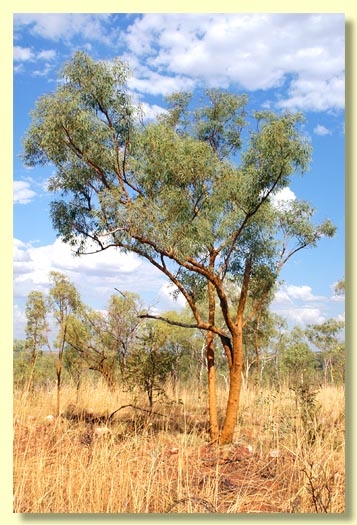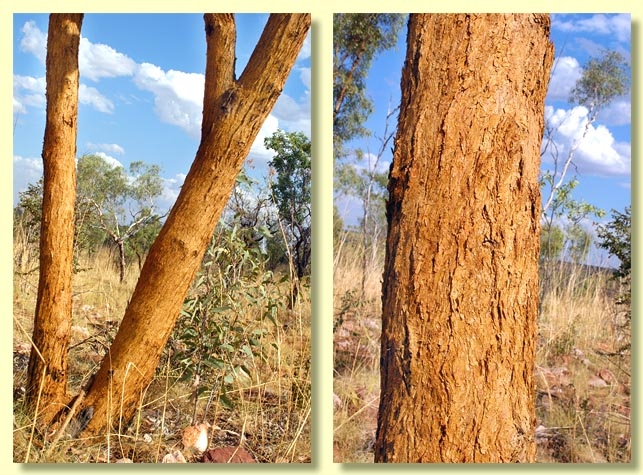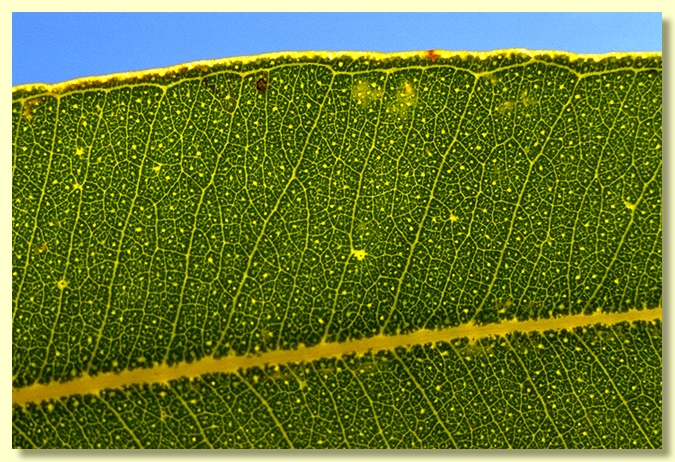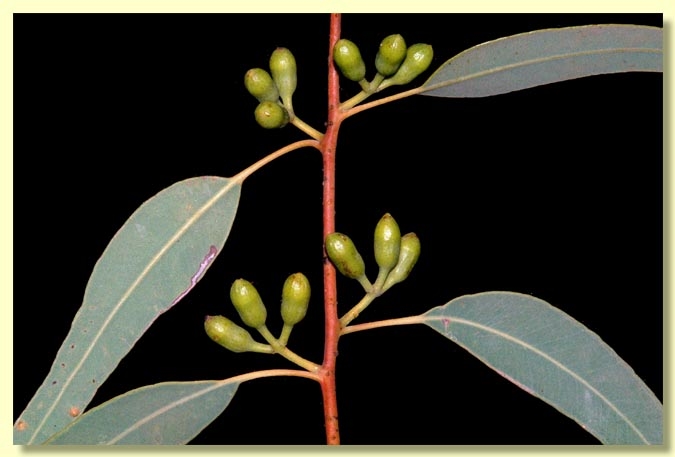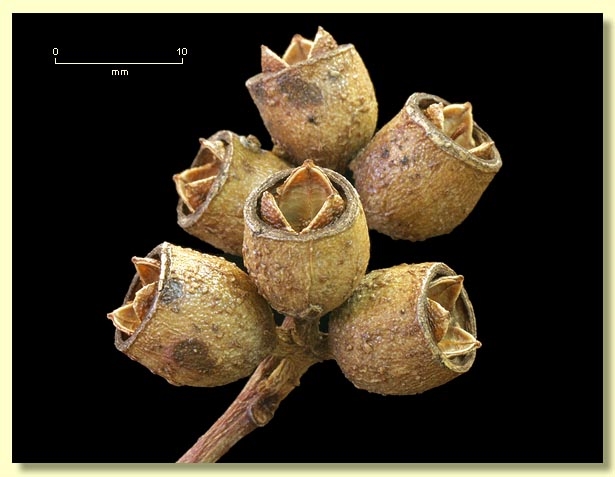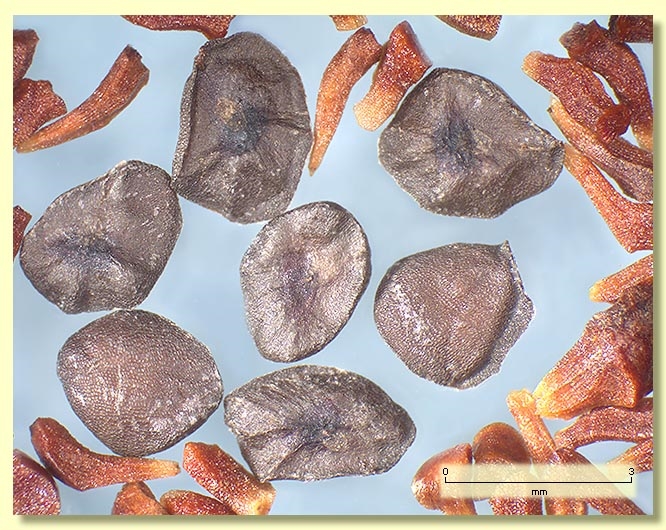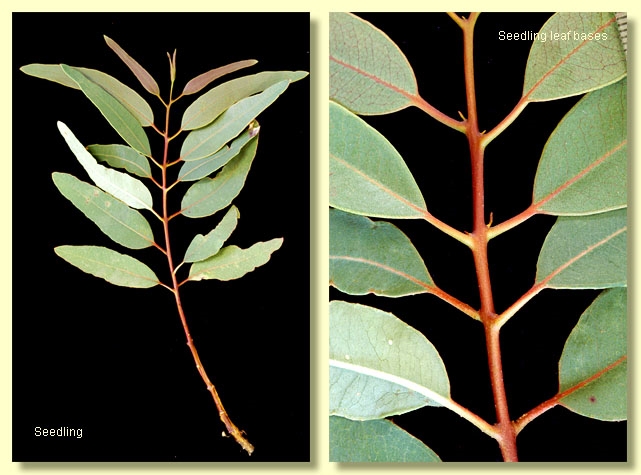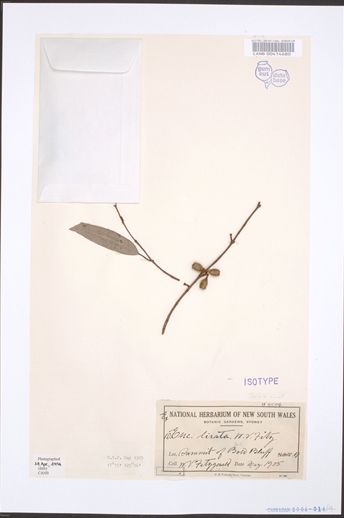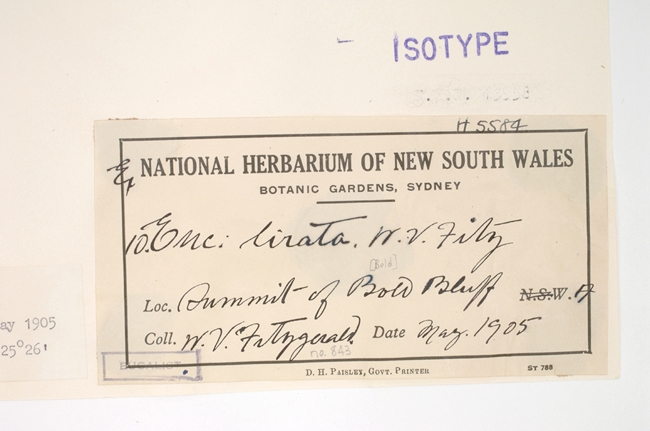Euclid - Online edition
Eucalyptus lirata
Eucalyptus | Eudesmia | Reticulatae | Miniatae | Variabiles
Small tree to 12 m tall, often multi-stemmed and mallee-like. Forming a lignotuber.
Soft fibrous, or loosely flaky, papery rough bark over most the trunk and branches, rough bark yellow-brown to orange-brown, sometimes weathering to grey.
Branchlets have oil glands in the pith.
Juvenile growth (coppice or field seedlings to 50 cm): stems rounded in cross-section, smooth; leaves always petiolate, alternate, ovate-elliptic, 4.5–9.5 cm long, 2.4–6 cm wide, base ± rounded, apex bluntly pointed or sometimes emarginate, green, glabrous.
Adult leaves sub-opposite to alternate, petioles 0.6–2 cm long; blade lanceolate or falcate, 6.5–14 cm long, 0.7–2.6 cm wide, base tapering to petiole, concolorous or slightly discolorous, dull blue-green to green or yellow-green, side-veins acute or at a wider angle than 45° to the midrib, tertiary venation moderate to dense, intramarginal vein present and very close to the margin, oil glands numerous, island.
Inflorescence axillary single, peduncles (0.3)0.5–0.8 cm long, rounded; buds 3 per umbel, pedicels 0.1–0.4 cm long. Mature buds cylindrical to rarely pyriform, 0.7–1.1 cm long, 0.4–0.5 cm wide, usually contracted around the middle, calyx fused to the corolla and evident as 4 small teeth at the apex of the bud, operculum rounded to conical, stamens irregularly flexed, anthers oblong, versatile, dorsifixed, dehiscing by longitudinal slits (non-confluent), style long, hooked or bent beneath the apex of the bud, stigma tapered, locules usually 3, the ovules usually arranged in 4 distinct vertical rows on the placentae. Flowers white or cream.
Fruit pedicellate (pedicels 0.1–0.4 cm long), cylindrical to cup-shaped to ± urceolate, 0.7–1.1 cm long, 0.5–1 cm wide, disc vertically descending, valves 3, slightly exserted or near the rim.
Seeds grey, saucer-shaped, 2.5–3.5 mm long, dorsal surface smooth, hilum ventral.
Cultivated seedlings (measured at node 10): cotyledons ± orbicular; stems rounded in cross-section, warty to slightly scabrid with short emergent oil glands bearing 1 or 2 short simple hairs apically; leaves always petiolate (petioles ca 0.7–1 cm long), opposite for 9–12 pairs then becoming alternate, lanceolate, 7.5–9 cm long, 1.3–3.2 cm wide, base rounded or tapering to petiole, apex pointed, green, discolorous, ± glabrous or with a few warts on underside and margin.
Flowering has been recorded in January, September and November.
A small tree or mallee, endemic to the central Kimberley region of Western Australia where it occurs on elevated sandstone sites and rocky rises, usually with sandy or gravelly soils. It is characterised by its rough, thin flaky or fibrous bark (micaceous) on the trunk and large branches, concolorous adult leaves, three-budded axillary umbels, the more or less cylindrical buds, and fruit with valves about rim level.
In the classification of Brooker (2000) Eucalyptus lirata belongs to the taxonomically complex Eucalyptus subgenus Eudesmia where it is in section Reticulatae, series Miniatae, subseries Variabiles characterised by having the calyx fused to the corolla and evident as four small teeth at the apex of the bud, hairy seedlings, adult leaf reticulation relatively dense, buds with a long style and anthers irregularly flexed. It is most closely related to E. similis from central Queensland, the only other member of this subseries. The two species can be separated by their adult leaves which are usually concolorous in E. lirata and discolorous in E. similis and by their peduncle length, which is up to 0.8 cm long in E. lirata and 1.4–2.3 cm in E. similis.
With its three-budded umbels and white flowers, E. lirata should not be confused with other members of the Eudesmia group with the persistent soft fibrous, flaky, papery bark, i.e. E. phoenicea, E. miniata, E. gigantangion, E. chartaboma and E. ceracea. All these species have umbels with seven or more buds per umbel and bright orange flowers.
Eucalyptus lirata: Latin liratus, ridges between furrows, referring to one of the habitats.

